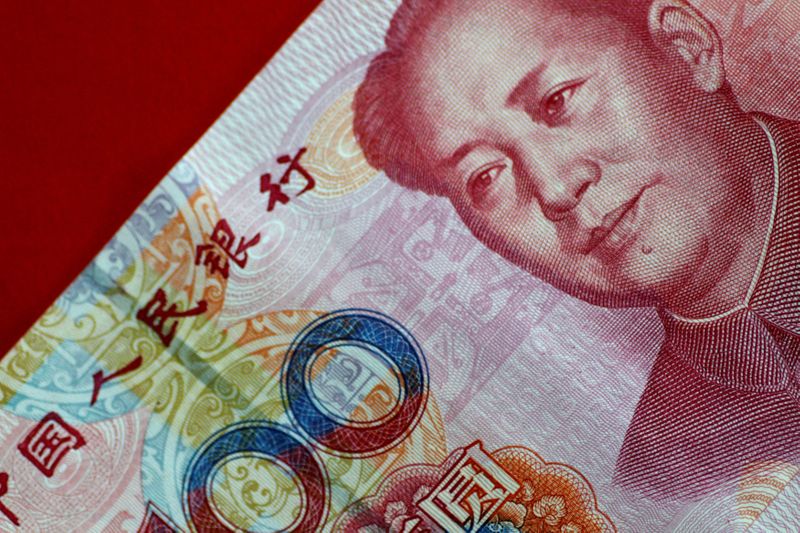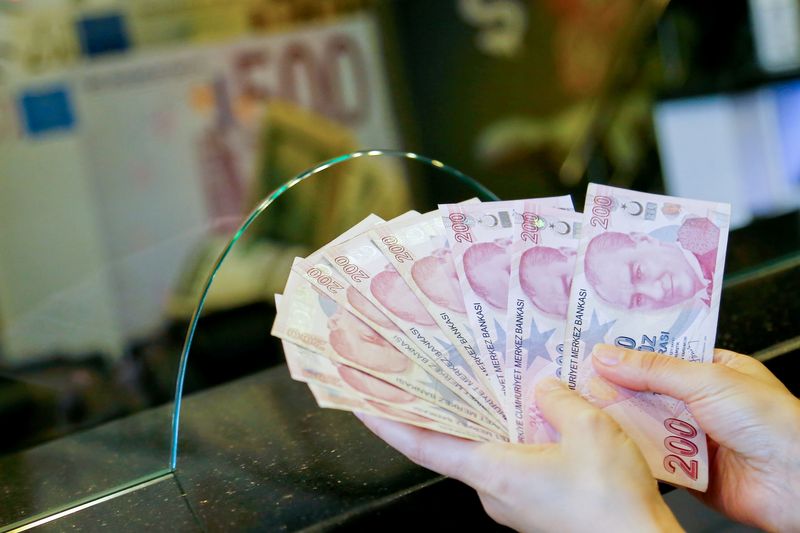JOHANNESBURG/BENGALURU/BUENOS AIRES (Reuters) – Emerging market currencies will struggle to make modest gains next year as the U.S. Federal Reserve turns more hawkish, squeezing interest rate differentials, amid likely unimpressive growth from world No. 2 economy China, a Reuters poll found.
Beaten-down currencies like the South African rand, Turkish lira and Thai baht are expected to climb by a fraction of what they fell over the past year in the next 12 months, 2.1% to 15.50/$, 15.0% to 11.71/$ and 3.3% to 32.75/$, respectively.
The Russian rouble is expected to fare better, rising 3.6% to 71.10/$ according to the Nov. 29-Dec. 2 survey, after a shallow dip so far this year of 0.2%. But there is little optimism generally around emerging FX.
The new Omicron coronavirus variant is also likely to weigh on emerging market sentiment as further studies are conducted on whether it can evade vaccine protection and how severe the symptoms are.
Dirk Willer at Citi notes “our forecasts assume that the new variant will not cause a replay of the 2020 outcomes. But we are already relatively negative on EM, and the recent news flow skews the risks to increased negativity.”
But the main challenge for emerging FX in 2022 is likely to be interest rate differentials, driven by the world’s most influential central bank as it gears up for tighter policy.
U.S. central bankers will discuss in December whether to end their bond purchases a few months earlier than had been anticipated, Federal Reserve Chair Jerome Powell said on Tuesday, leading to a sharp move higher in shorter-dated Treasury yields.
Citi noted that “capital flows to emerging markets are ‘driven by U.S. monetary conditions’, while growth in EM is ‘driven by China’ and next year looks bad on both counts.”
Growth in emerging market economies recovered for most countries this year after initial pandemic lockdowns, but it is expected to slow into next year on lower consumption from China compared with previous stronger years.
The Chinese yuan, tightly managed by Chinese authorities, was predicted to lose 1.5% against the greenback over the coming year after gaining 2.5% so far this year as the economy is widely expected to grow at a much weaker pace next year, compared to 2021.
“The bottom line and our main message is that more sustained and sustainable EM growth will be required to bring back portfolio inflows to support local assets across the board,” noted Alvaro Vivanco, head of ESG macro and EM strategy at Natwest.
“Against this backdrop, we argue for a defensive stance for EM currencies through a few directional trades, while being extremely selective on our longs and “all the boxes need to ticked” for local duration.”
In Latin America, Mexico’s peso is entering the new year surrounded by doubts over its decreasing carry-trade appeal, while Brazil’s real is set for some respite after taking a hit in the second-half of 2021.
“Political and fiscal uncertainties on the domestic front, coupled with the start of the normalization of the monetary policy in the U.S. should prevent the BRL from strengthening substantially in the coming months,” wrote analysts at Banco Santander Brasil.
Meanwhile, some strategists are questioning President Andres Manuel Lopez Obrador’s decisions for a new leadership in Mexico’s central bank as domestic inflation continues to outstrip expectations, affecting Mexican peso’s outlook.
(Reporting by Vuyani Ndaba in Johannesburg, Indradip Ghosh in Bengaluru and Gabriel Burin in Buenos Aires; Editing by Nick Zieminski)

























